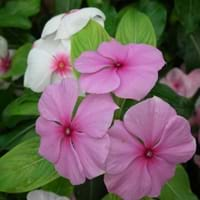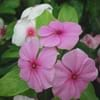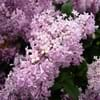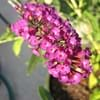Life Span
Perennial
Perennial
Type
Flowering Plants, Shrubs
Tree
Origin
Madagascar
Europe, Turkey
Types
Purple vinca, Vinca, cherry red, strawberry color
Not available
Number of Varieties
Not Available
Habitat
Subtropical climates, Tropical regions
hedge rows, Woodlands
USDA Hardiness Zone
4-9
2-9
AHS Heat Zone
12-1
Not Available
Sunset Zone
A1, A2, A3, H1, H2, 1a, 1b, 2a, 2b, 3a, 3b, 4, 5, 6, 7, 8, 9, 10, 11, 12, 13, 14, 15, 16, 17, 18, 19, 20, 21, 22, 23, 24
Not Available
Habit
Clump-Forming
Upright/Erect
Flower Color
Magenta, Pink, Rose
Yellow, Green, Orange Red
Flower Color Modifier
Not Available
Bicolor
Fruit Color
Not Available
Green
Leaf Color in Spring
Dark Green
Light Green
Leaf Color in Summer
Dark Green
Dark Green
Leaf Color in Fall
Dark Green
Lemon yellow, Yellow green, Orange Red
Leaf Color in Winter
Dark Green
Not Available
Plant Season
Fall, Spring, Summer, Winter
Summer, Fall, Winter
Sunlight
Partial shade
Full Sun, Partial Sun
Type of Soil
Loamy, Sandy, Well drained
Loam
The pH of Soil
Neutral, Slightly Alkaline
Acidic, Neutral
Soil Drainage
Well drained
Average
Bloom Time
Fall, Spring, Summer
Spring
Tolerances
Drought, Pollution, Salt
Drought, Pollution, Variety of soil types
Where to Plant?
Container, Ground, Pot
Ground
How to Plant?
Seedlings, Stem Planting, Transplanting
Grafting, Seedlings
Plant Maintenance
Medium
Low
Watering Requirements
Does not require lot of watering, Medium
Average Water Needs, Do Not over Water, Keep the ground moist but not water-logged, Requires regular watering
In Summer
Lots of watering
Lots of watering
In Spring
Moderate
Moderate
In Winter
Average Water
Average Water
Soil pH
Neutral, Slightly Alkaline
Acidic, Neutral
Soil Type
Loamy, Sandy, Well drained
Loam
Soil Drainage Capacity
Well drained
Average
Sun Exposure
Partial shade
Full Sun, Partial Sun
Pruning
Prune ocassionally
Cut or pinch the stems, Remove damaged leaves, Remove dead branches, Remove dead leaves
Fertilizers
All-Purpose Liquid Fertilizer
All-Purpose Liquid Fertilizer, Nitrogen, Water soluble fertilizers
Pests and Diseases
Botrytis Blight, Canker, Crown rot, Pythium rot, Root rot
Aphids, Caterpillars, Powdery mildew
Plant Tolerance
Drought
Drought, Pollution, Variety of soil types
Flowers
Yes
Insignificant
Flower Petal Number
Single
Not Available
Fragrant Leaf
No
Not Available
Foliage Texture
Medium
Medium
Foliage Sheen
Glossy
Glossy
Attracts
Butterflies
Birds, Not Available
Allergy
Intestinal gas, Nausea, Vomiting
Asthma, conjunctivitis, Pollen, Rhinitis
Aesthetic Uses
Beautification, Showy Purposes
Cottage Garden
Beauty Benefits
Not Available
Skin irritation, Stops hair loss
Environmental Uses
Air purification
Air purification, Shelter for wildlife
Medicinal Uses
Chest pain, High blood pressure, Inflammation, Sore throat, Tooth ache, Wounds
Cold, Cough, Diarrhea, Hair Loss, Headache, hemorrhoids, Rheumatism, Sore throat
Part of Plant Used
Whole plant
Leaves
Other Uses
Decoration Purposes, Showy Purposes, Used as Ornamental plant
Cosmetics, Used as Ornamental plant, Used for its medicinal properties
Used As Indoor Plant
Yes
No
Used As Outdoor Plant
Yes
Yes
Garden Design
Bedding Plant, Container, Edging
Feature Plant, Shade Trees
Botanical Name
Catharanthus roseus
Carpinus betulus
Common Name
Madagascar periwinkle or rosy periwinkle
Common Hornbeam, European Hornbeam
In Hindi
Periwinkle
हानबीन
In German
Immergrün
Hainbuche
In French
Pervenche
charme
In Portuguese
Mirta
choupo-branco
In Latin
Periwinkle
Item carpinus
Phylum
Mollusca
Magnoliophyta
Class
Gastropoda
Magnoliopsida
Family
Apocynaceae
Betulaceae
Genus
Catharanthus
Carpinus
Clade
Not Available
Angiosperms, Eudicots, Rosids
Tribe
Not Available
Not Available
Subfamily
Not Available
Coryloideae
Season and Care of Periwinkle and Hornbeam
Season and care of Periwinkle and Hornbeam is important to know. While considering everything about Periwinkle and Hornbeam Care, growing season is an essential factor. Periwinkle season is Fall, Spring, Summer and Winter and Hornbeam season is Fall, Spring, Summer and Winter. The type of soil for Periwinkle is Loamy, Sandy, Well drained and for Hornbeam is Loam while the PH of soil for Periwinkle is Neutral, Slightly Alkaline and for Hornbeam is Acidic, Neutral.
Periwinkle and Hornbeam Physical Information
Periwinkle and Hornbeam physical information is very important for comparison. Periwinkle height is 1.97 cm and width 2.96 cm whereas Hornbeam height is 610.00 cm and width 610.00 cm. The color specification of Periwinkle and Hornbeam are as follows:
Periwinkle flower color: Magenta, Pink and Rose
Periwinkle leaf color: Dark Green
Hornbeam flower color: Yellow, Green and Orange Red
- Hornbeam leaf color: Light Green
Care of Periwinkle and Hornbeam
Care of Periwinkle and Hornbeam include pruning, fertilizers, watering etc. Periwinkle pruning is done Prune ocassionally and Hornbeam pruning is done Cut or pinch the stems, Remove damaged leaves, Remove dead branches and Remove dead leaves. In summer Periwinkle needs Lots of watering and in winter, it needs Average Water. Whereas, in summer Hornbeam needs Lots of watering and in winter, it needs Average Water.





